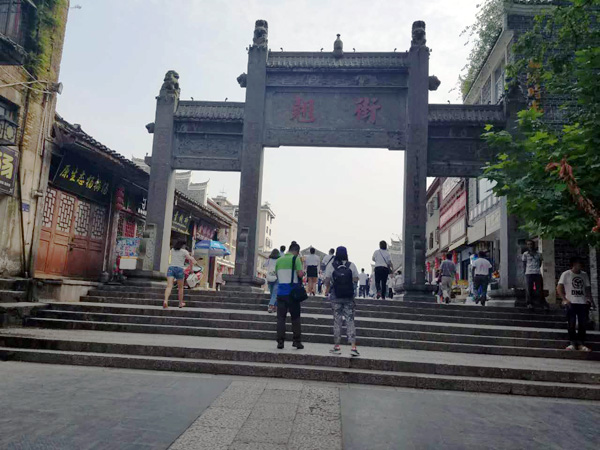


 |
|
An archway with Qiao Jie (Qiao Street) written on it in Liping county, Guizhou province, Sept 6, 2016.[Photo by Faisal Kidwai/chinadaily.com.cn] |
Fancy a free Kindle? Take this Long March quiz.
Their faces were toward only one direction: front. Their eyes were fixed on only one thing: the gate. They were waiting for only one thing: their children.
And then they turned their heads sideways and a smile spread across their faces as the gate of the school opened and the children began rushing toward their parents.
The young students who started animatedly telling their parents about their day were standing meters away from an historic place: Qiao Street in Liping county, Guizhou province.
Dubbed the "most famous street of history and culture in China" in 2011, it was the site of the Liping Conference, the first meeting of the Political Bureau of the Communist Party of China held on December 18, 1934, during the Long March.
The street, built during the Ming Dynasty (1368-1644), has an archway right at the entrance with the characters Qiao Jie written on it. It got its name as both lanes of the street merge into one at the other end and rise upward. In Chinese, qiao means rising upward and jie stands for street.
After the archway and the school near it, the street reveals rows of buildings dating back to Ming and Qing dynasties. Many of these ancient houses still have residents living in them while some have been converted into shops by enterprising businessmen who sell everything from local delicacies to ethnic dresses.
In the middle of these buildings is a museum built both to commemorate the Liping Conference and also to help tourists understand the event's significance. Opposite the museum is the actual site where the meeting was held. It still houses many relics such as telephone, chairs and tables of that period.
The State Council, or China's cabinet, listed it as one of the nationally protected historical and cultural sites of the country in 2006.
The street is a must-visit place not only for its historical roots but also for its ancient architecture, the numerous alleys where residents still live and shopping, especially for dresses, arts and crafts of Dong people.
